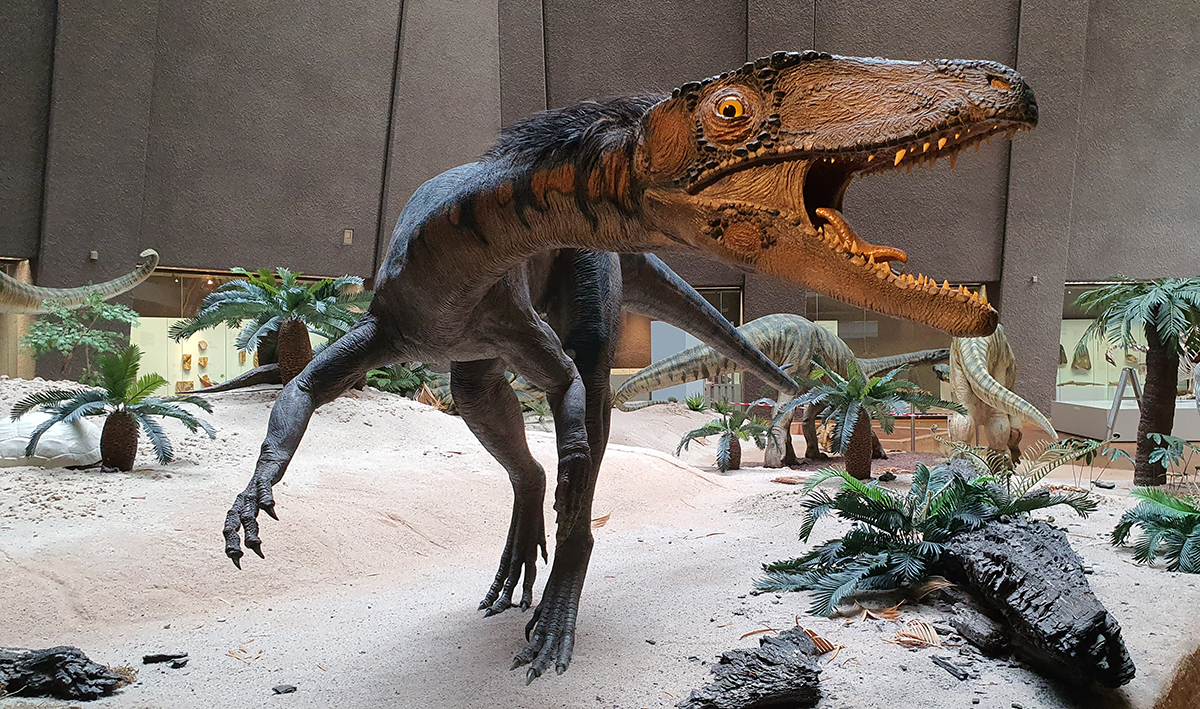
Theropod is a suborder of saurischian dinosaur. characterized by having hollow bones and three fingers on the extremities. However, in 2017 an article reclassified them in the Ornithosceldia group. The original name "Theropoda", from the Greek, means translated "beast foot".
At first, the dinosaurs belonging to this suborder were predatory. However, many of them evolved to be omnivorous, insectivorous, herbivorous, and piscivorous. Its first appearance was almost 232 million years ago, at the end of the Triassic period. Furthermore, all large terrestrial carnivores from the Early Jurassic to the late Cretaceous were Theropods. During the Jurassic period, the smallest of this suborder evolved into birds. Currently, there are about 10.500 living species that fall within the Theropod suborder.
Description of the Theropod
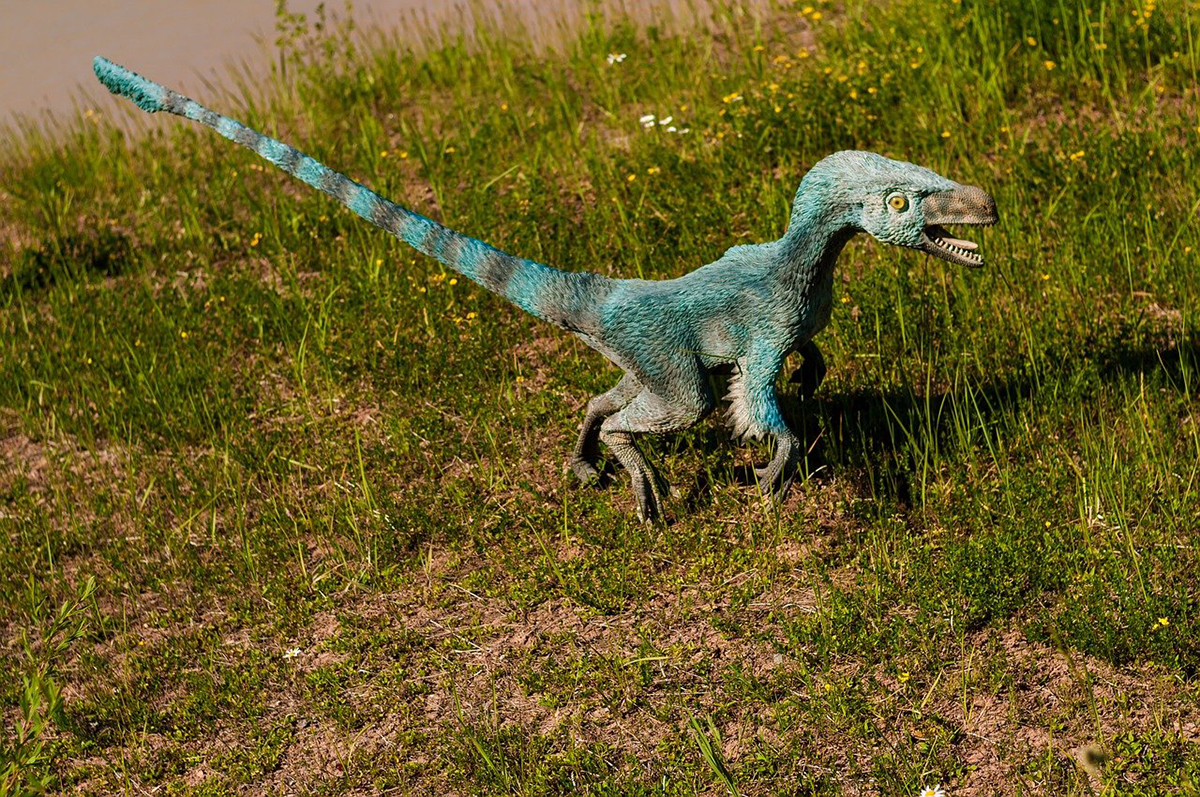
Despite being the same suborder, there were many differences between the dinosaurs belonging to the Theropods. Several genera have been found with feathers, or at least similar structures. However, it seems to be a more common feature among young individuals and small species. Sometimes they seem to have existed only in some areas of the body. The largest specimens had small raised scales covering their skin. There are species in which these scales were interspersed with larger ones that had bone nuclei. An example for this type of skin is the Carnotaurus. There is also evidence that suggests that some Theropods could have had both scales and feathers at the same time.
Postures
In addition to having different types of skin, animals belonging to the Theropod suborder likely had different types of postures and locomotion. To this day it is speculated that all of them were bipedal and that their front limbs were smaller. Non-avian theropods, such as carnosaurs and tyrannosaurids, were initially thought to maintain an almost fully upright posture. Its tail in this case served as support, as in current kangaroos. However, in the 70s, investigations of bone articulation were carried out that ruled out this theory. Furthermore, there is no fossil evidence that the huge Theropods dragged their tails. Therefore, experts speculate that the giant animals of this suborder adopted a more horizontal posture with their tails parallel to the ground.
[related url=»https://infoanimales.net/dinosaurs/tyrannosaurus-rex/»]
On the other hand, there are different opinions about the orientation of the legs. Some research indicates that the femur was oriented vertically in large, long-tailed Theropods. However, other studies suggest that all theropods kept their knees strongly flexed while walking. Most likely there were many different types of stances, gaits, and positions. among the various groups of extinct theropods.
Size
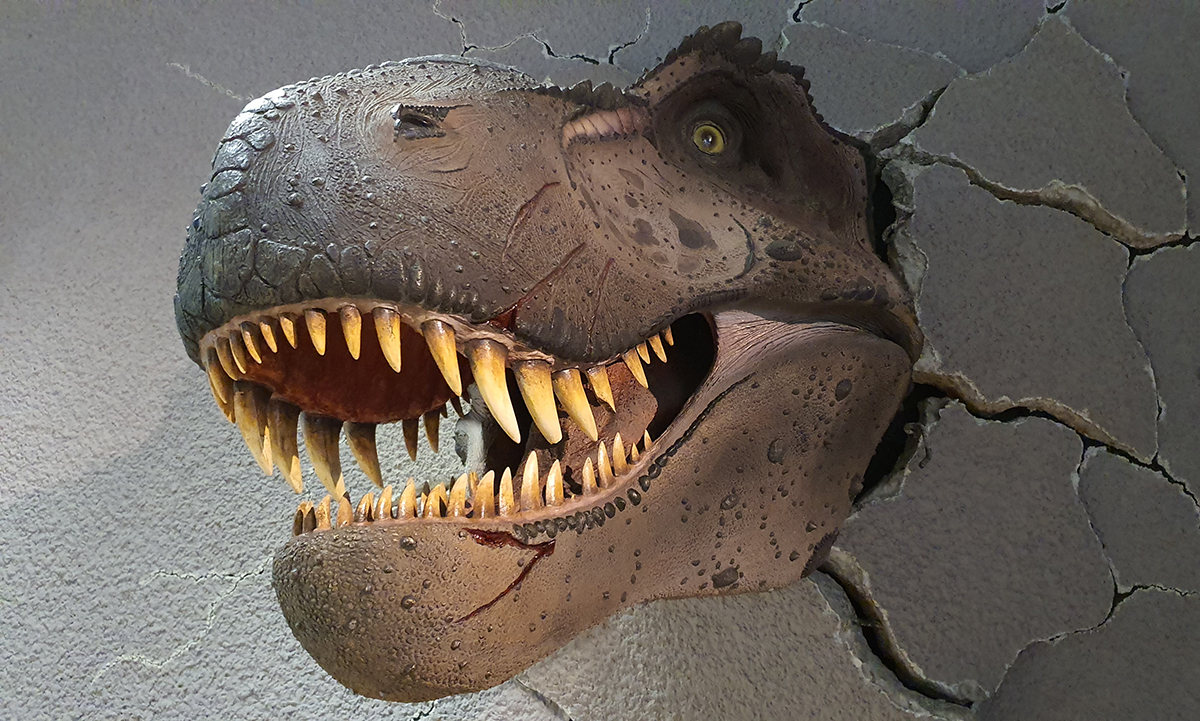
Within the Theropod suborder, the famous Tyrannosaurus stands out. It held the position of the largest known Theropod for many decades. However, later finds also included giant carnivores. Among them stand out the Giganotosaurus and the Spinosaurus. The latter seems to have been 3 meters longer than the Tyrannosaurus. However, it was probably something smaller and lighter. There is no scientific explanation for these enormous sizes nor why other terrestrial carnivores did not reach such dimensions. Currently, the largest theropod is the ostrich. This can reach 2,74 meters tall and weigh 63,5 to 145,15 kilos.
At the other extreme is the Anchiornis huxleyi. It is the smallest known non-avian theropod. It had an approximate length of 35 centimeters and a weight of 110 grams. However, today there is an even smaller theropod: the hummingbird. This weighs about 1,9 grams and has a length of 5,5 centimeters.
[related url=»https://infoanimales.net/dinosaurs/spinosaurus/»]
There is a theory regarding the evolution of birds. He says that the size of theropods was decreasing for 50 million years. They went from having an average weight of 163 kilos to having an average weight of 0,8 kilos. Theropods were the only prehistoric animals capable of continuously decreasing their size. The change that their skeletons underwent was four times faster than in other types of dinosaurs.
Theropod feeding
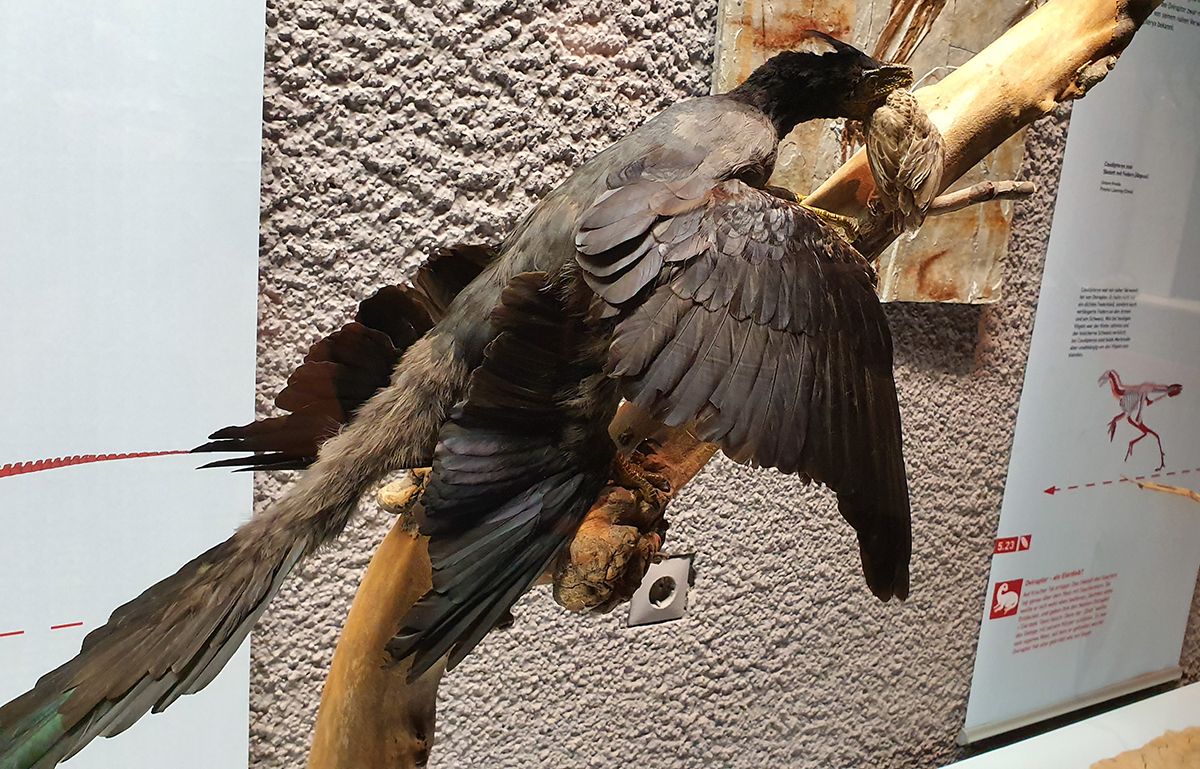
The first fossil discoveries of theropods showed that these animals had sharp, serrated teeth, ideal for cutting meat. Specimens with evidence of predation have even been found, such as Compsognathus and Velociraptor. For this reason, experts confirm that the dinosaurs belonging to this suborder were mainly carnivorous. Instead, avian theropods had a more varied diet. This included plants, insects and meat. However, studies carried out between the XNUMXth century and the XNUMXst century indicate that ancestral Theropods could also have fed in a more diverse way and not only on meat.
The first confirmed herbivorous theropod is the Tericinosaurus, also known as Segnosaurus. These dinosaurs had very large abdomens to be able to process vegetables. The Segnosaur's head was small. It had a leaf-shaped beak and teeth. After conducting a series of studies, paleontologists came to the conclusion that there were more herbivorous Theropods than the Tericinosaurus. Different groups of fossil maniraptorans have evidence that they may have been omnivorous. In some troodontids this included the seeds and in many avians the insects. In addition, some Theropods came to specialize in fishing, such as spinosaurids.
How is it possible to deduce the diet of dinosaurs?
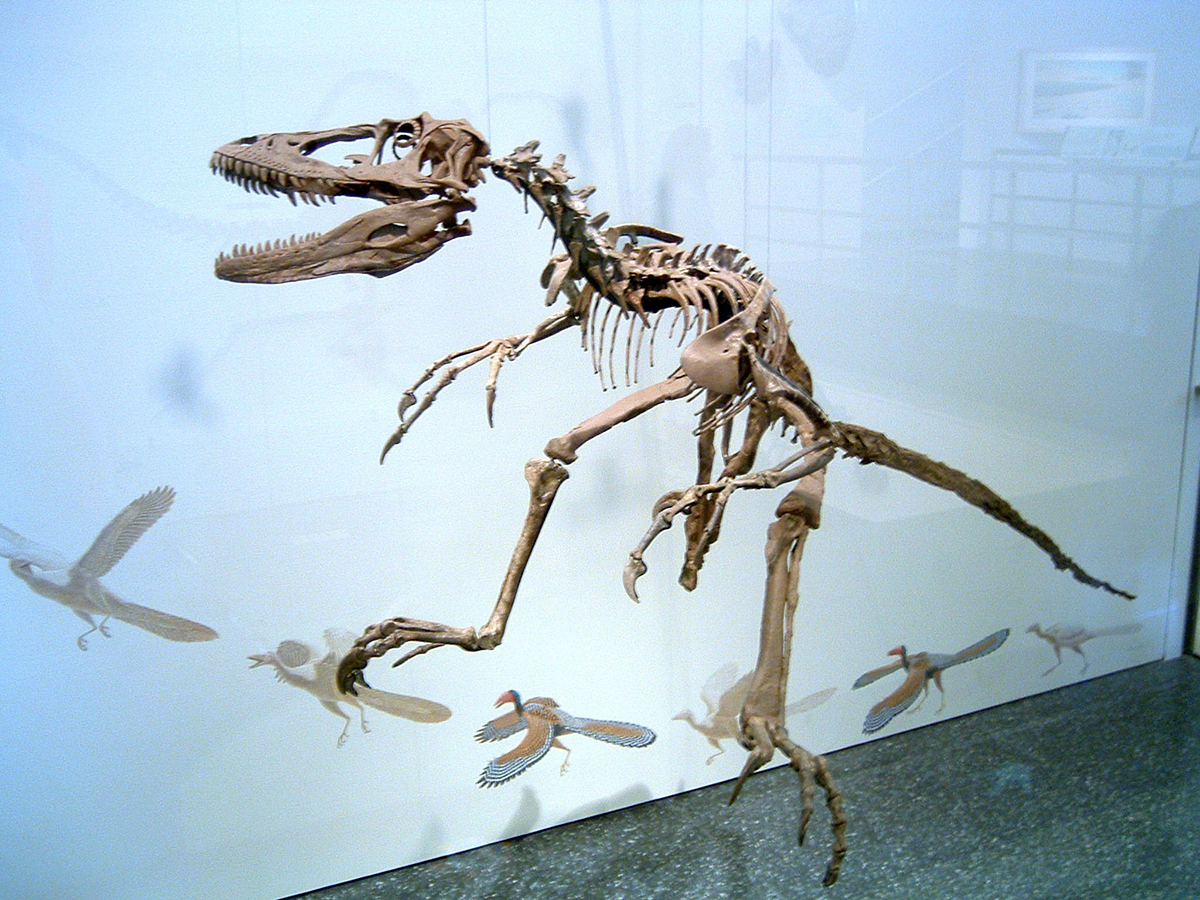
Thanks to the studies of the dental morphology, the marks of teeth that have been found in bones and the fossil remains of intestinal contents it can be deduced what a dinosaur's diet was composed of. Today we know that there were Theropods that used gastroliths. These are stones that help process ingested food. Among them are the Baryonyx, birds and ornithomimosaurs.
Almost all theropods show ziphodonty. That is to say: its serrated teeth are knife-shaped. The others, on the other hand, turn out to be philodonts or pachydontes. As the morphology of the teeth of these animals is quite distinctive, it is easy to differentiate the families that make up the Theropods. In addition, through these traits it is possible to deduce the feeding strategies they followed. In 2015, the results of an investigation that had been carried out on the cracks found in the teeth of these animals were published. They turned out to be folds that served to prevent the teeth from breaking during hunting. In addition, they were a great help in keeping the teeth in place.